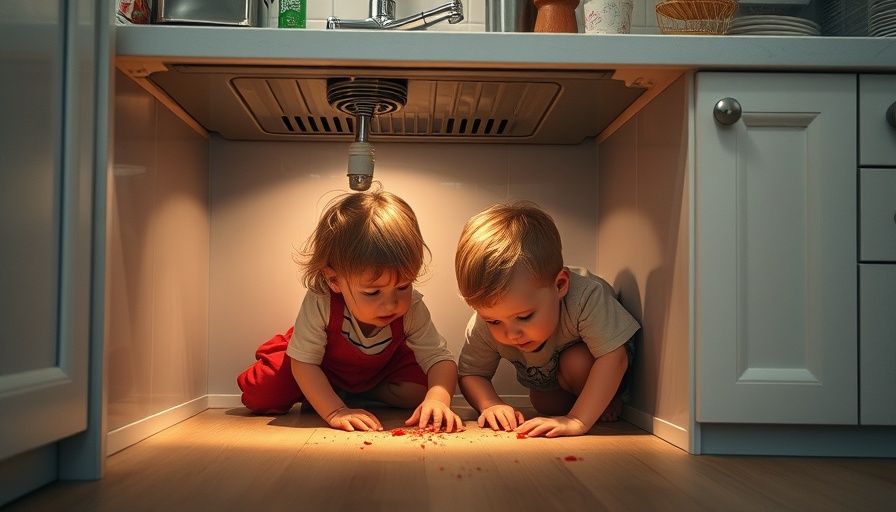
Identifying Household Dangers: A Family's Responsibility
At home, we often find ourselves in a bubble of comfort and safety. However, as episodes of Ask the Doc reveal, it is crucial to acknowledge that household dangers can lurk in the corners of our everyday lives. For families, including children and senior citizens, understanding these risks and implementing preventive measures becomes important. The concern voiced by a viewer, Harris, about his aging parents is common and reflects a broader need for awareness.
In Hidden Hazards: Household Dangers You Shouldn’t Ignore | Ask the Doc, the discussion dives into the significance of recognizing household dangers, prompting us to explore how we can safeguard our loved ones from hidden risks.
Make Your Home a Safer Place
As highlighted by Dr. Kamojit Core, fundamental steps exist to enhance home safety. Clearing clutter, especially from floors, can significantly minimize the risk of falls. Ensuring a clear walking path by rearranging furniture is another simple yet effective measure. Additionally, investing in night lights throughout the house is beneficial for nighttime navigation, particularly for the elderly.
The kitchen, often a hub of activity, presents unique challenges. Keeping items within arm’s reach and utilizing sturdy step stools with handrails for reaching high shelves can help prevent unnecessary accidents. Regularly cleaning surfaces to avoid slips and ensuring that spills are tackled immediately are also essential practices.
Addressing Hazards Posed by Medications
Olivia's concern about her mother's medications echo a common parenting fear: the potential danger posed to children. As Dr. Core suggests, initiating a gentle discussion with the elderly on safe storage solutions for medications can lead to better practices. Designating a locked cabinet or a specific area out of children's reach can effectively reduce accidental ingestion risks.
Baby-Proofing Basics: A Guide for New Parents
When 11 months turn into a little explorer, parents need to be entirely prepared. Baby proofing involves a thorough walkthrough of the home, including the kitchen and living spaces. Simple measures like covering electrical outlets, securing heavy furniture, and preventing access to dangerous chemicals under sinks are essential. Additionally, ensuring that breakable items are out of reach and that stoves and sharp objects are secured can create a safer environment for children.
The Importance of Surveillance
No safety measure is more effective than vigilant supervision. As families, especially those with young children, ensure adult eyes are always on children. This proactive observation remains the best defense against potential hazards, particularly around pool areas or other significant safety risks.
Preparing for Visits from Grandchildren
For grandparents like Arthur, who are excited to welcome lively grandkids, preparation for their visits is paramount. Identifying hazards within the household—a mixture of common sense and intentional steps—can lead to memorable family moments free of preventable injuries. It is critical to remove anything that could serve as a projectile, such as loose furniture or breakable decorations, as children are often curious and energetic in their play.
Living Responsibly Around Potentially Toxic Elements
A topic that requires awareness is carbon monoxide poisoning—a silent threat present in many homes. Educating oneself on signs, having functioning detectors, and understanding the risks of burning fuels for heating or cooking in poorly ventilated spaces can drastically enhance the safety of your living environment.
Real-Life Stories and Anecdotes
Listening to others' experiences can impart valuable lessons in home safety. Every precaution taken at home reflects a commitment to family health. Dr. Core's personal story of concern for his own mother exemplifies the universal nature of these worries across families.
Final Thoughts and Community Responsibility
This discussion on household dangers is not simply a guide; it's a call for community vigilance. The safety of our relatives and friends can significantly shape community wellbeing and health. It’s imperative to engage in dialogues around safety and emphasize the importance of preventative care and childproofing within families and communities.
If you care about the health and wellness of your family and community, consider taking action today. Have conversations with loved ones around home safety, explore safety products, and get involved in community health initiatives that focus on family health and disease prevention. Together, we can foster environments where families can thrive safely.
 Add Row
Add Row  Add
Add 




Write A Comment